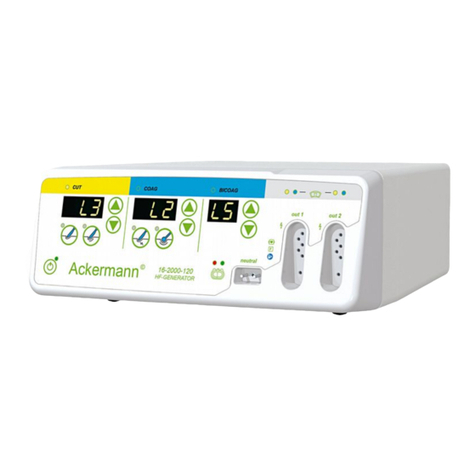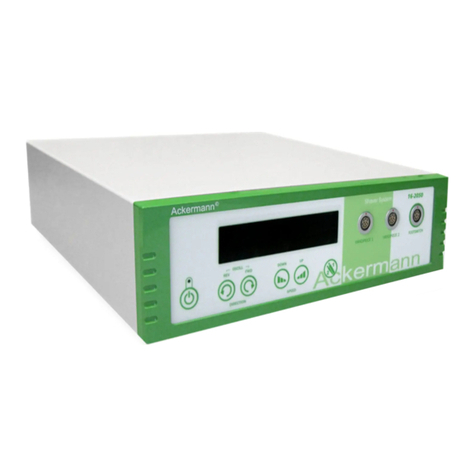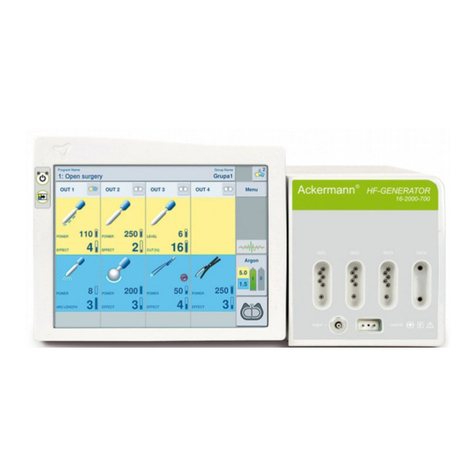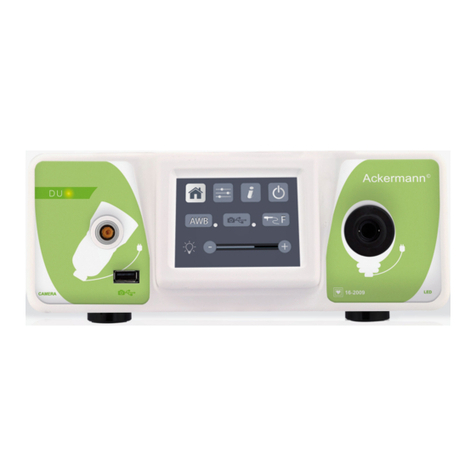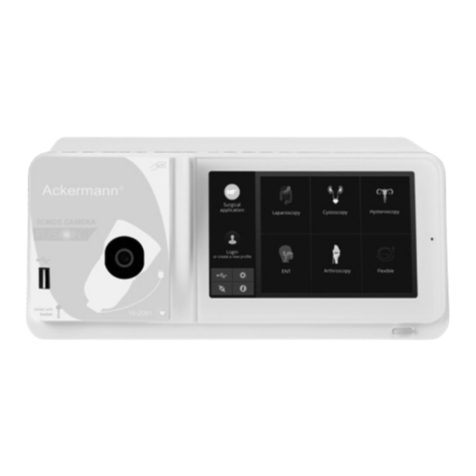
USER MANUAL 16-2045 Rev. 09/2017
•Unplug the device from the main power if you do not intend to use it for several days or
more
•Use only the disinfectant methods recommended in section 8
•Prior to each use, make sure that the device does not have any rough surfaces, sharp
edges or protruding parts that could cause safety problems
•To avoid any risk of electrical shock, this device must be connected only to a power
system equipped with protective grounding
•Any modification of this device without authorisation of the manufacturer is prohibited. If
the medical device is modified, an inspection and a test must be carried out to ensure that
the medical device complies with the safety regulations
•This device is to be used on individuals (patients) fit to undergo an endoscopic procedure
•The use of tubing hoses or accessories other than those specified may lead to
malfunction of the device and incorrect measurement of the instantaneous pressure
•The insufflator is intended for professional use in operating theatres
•To ensure proper hygiene between patients and avoid contamination, make sure tubes
are thoroughly sterilized
•Do not drop the device. If the device falls, do not reconnect the device but send it back to
your authorised distributor
•Do not move the device when an operation is in progress
•The use of accessories, transducers or cables other than those specified, with the
exception of transducers and cables provided by the manufacturer of the insufflator, can
result in increased emissions or reduced insufflator immunity
No additional multiple-socket outlets or extensioncords must be connected to the EMsystem.
It is advisable to have a second insufflator in the operating theatre so that action can be
taken if the device fails to perform or if a deterioration in performance is noticed.
The use of this device is always contraindicated in cases of intra-abdominal distension,
or when laparoscopy is contraindicated. Kindly refer to the laparoscope user manual for
absolute and relativec ontraindications.
This instrument is contraindicatedfor hysteroscopic insufflation;it should NEVER beused
in cases of intrauterine distension.
Note: the insufflator distension pressure for laparoscopy must never exceed 25 mm Hg.






